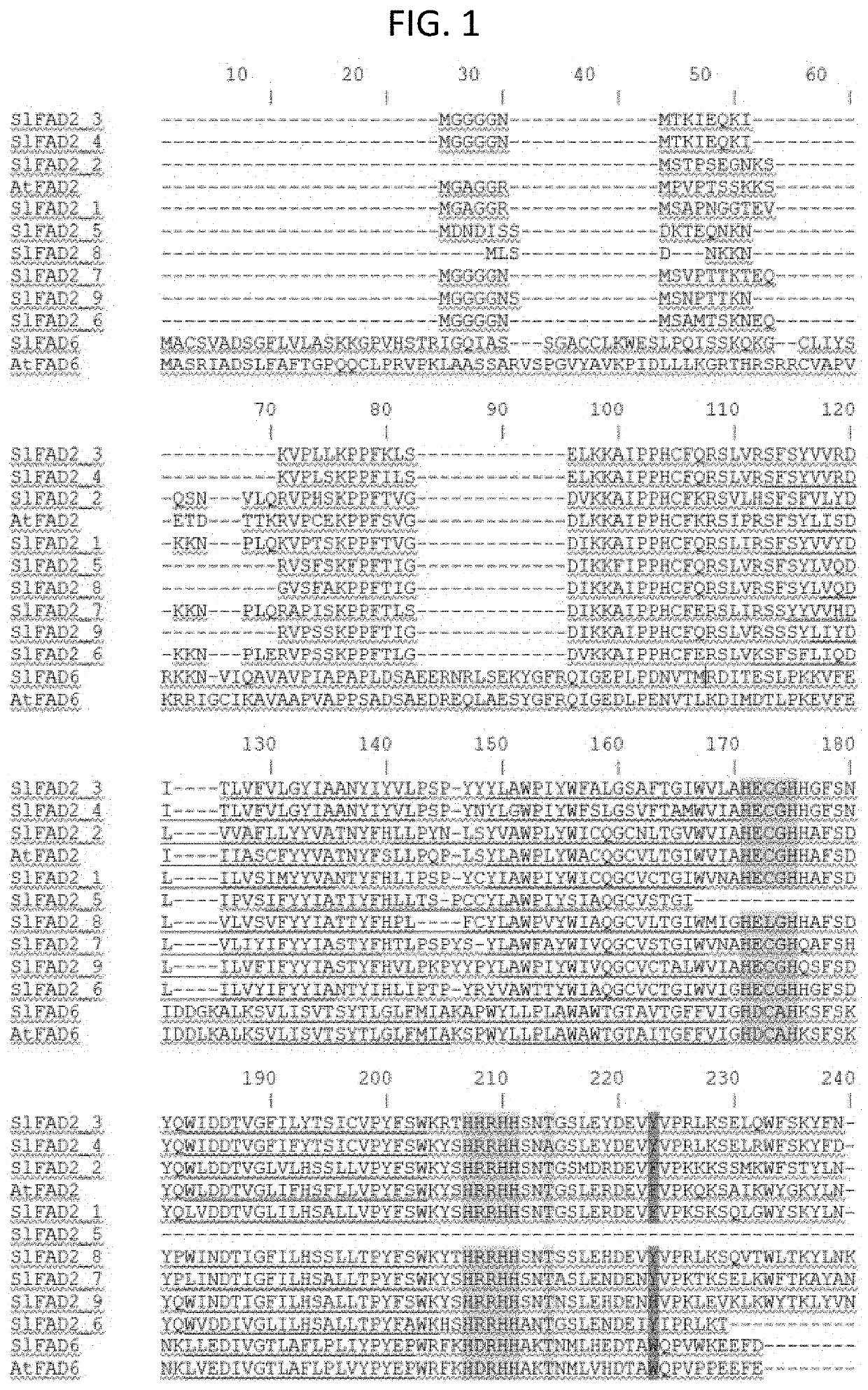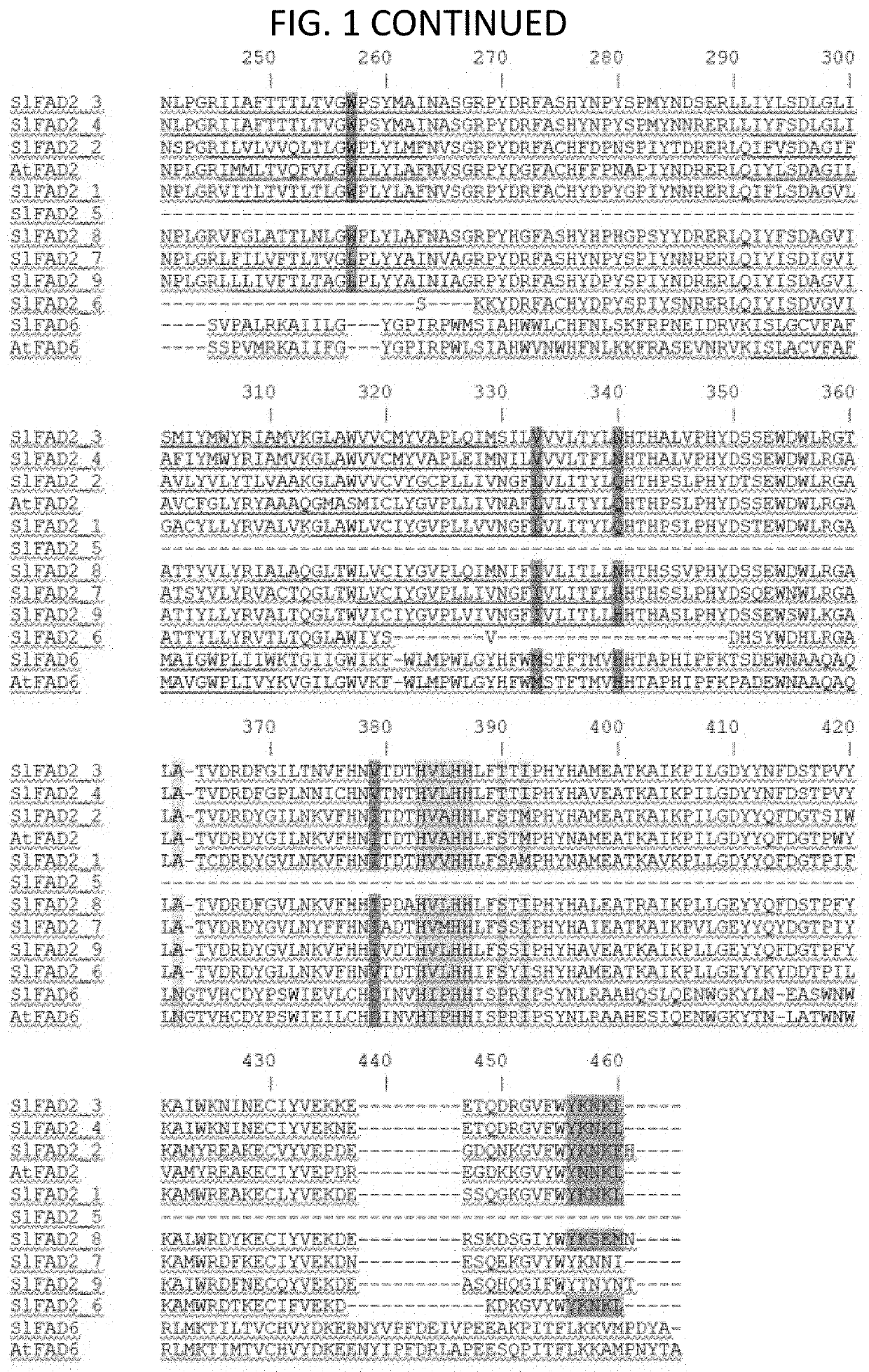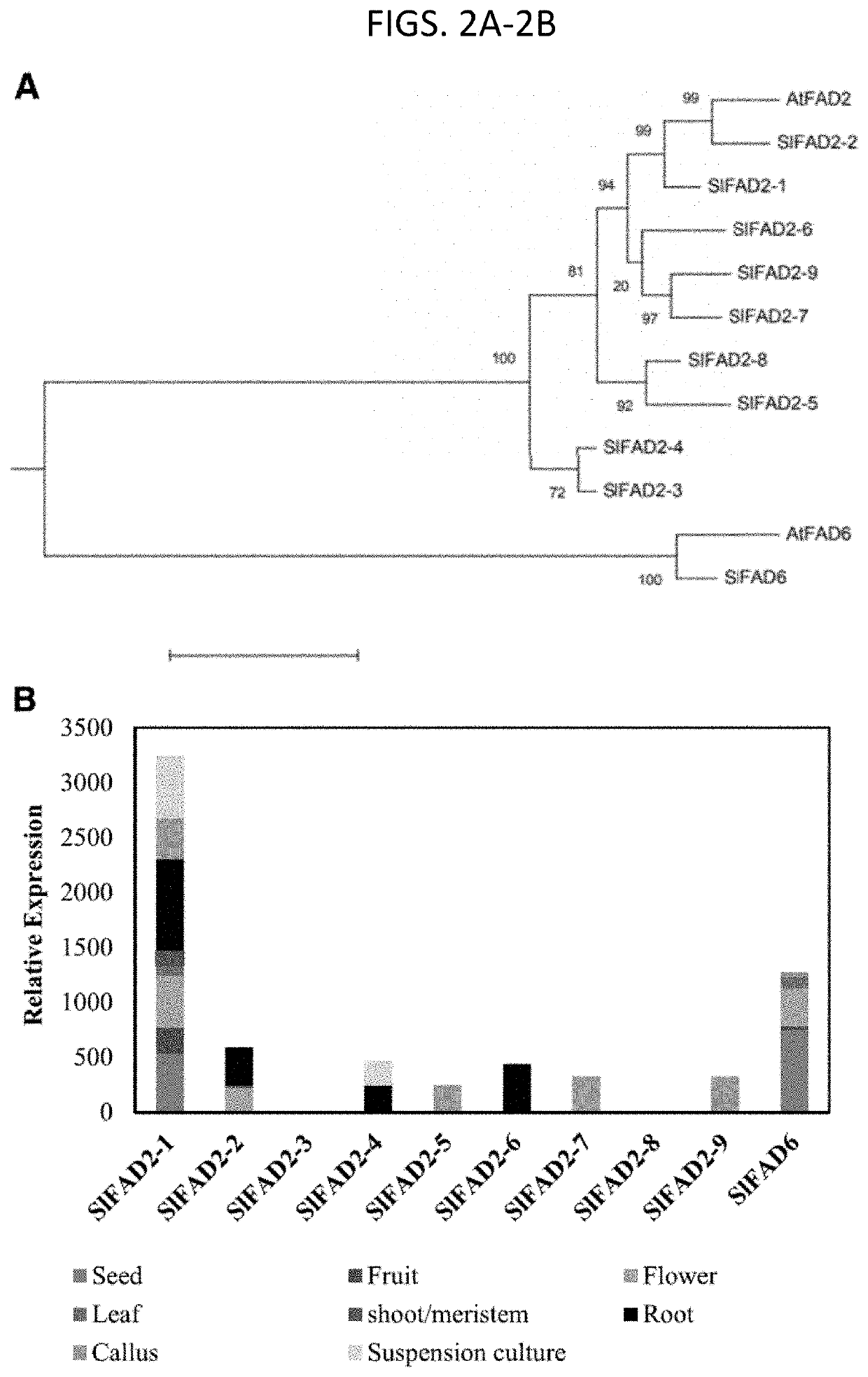The fatty acid desaturase 2 family in tomato
a technology of desaturase and fatty acids, applied in hydrolases, biochemistry apparatus and processes, enzymes, etc., can solve problems such as problematic composition of tomato seed oil, reduce polyunsaturated fatty acid production, and reduce the function of a target gene function, so as to reduce the production of polyunsaturated fatty acid, the effect of reducing or eliminating the function of a target gen
- Summary
- Abstract
- Description
- Claims
- Application Information
AI Technical Summary
Benefits of technology
Problems solved by technology
Method used
Image
Examples
example 1
[0076]This embodiment focuses on members of the FAD2 family, which includes Δ-12 desaturases and enzymes with divergent activities. Although this family occurs throughout the plant kingdom, knowledge of these enzymes is based largely on research on the model plant Arabidopsis (Arabidopsis thaliana) and on oil seed crops. The Arabidopsis FATTY ACID DESATURASE 2 (AtFAD2) gene was the first FAD2 gene to be described, and encodes a Δ-12 desaturase localized in the endoplasmic reticulum (ER) (Falcone et al., 1994; Okuley et al., 1994). Together with FATTY ACID DESATURASE 6 (FADE), a Δ-12 FAD localized in the chloroplast, the FAD2 enzyme enables the accumulation of polyunsaturated fatty acids in plants by adding a second double bond to the monounsaturated fatty acid oleic acid (18:1Δ9) at the Δ-12 position in the acyl chain (Ohlrogge and Browse, 1995). This yields linoleic acid (18:2Δ9,12), which can in turn be converted to linolenic acid (18:3Δ9,12,15) by Δ-15 (i.e. ω-3) fatty acid desat...
PUM
| Property | Measurement | Unit |
|---|---|---|
| pH | aaaaa | aaaaa |
| Tm | aaaaa | aaaaa |
| temperature | aaaaa | aaaaa |
Abstract
Description
Claims
Application Information
 Login to View More
Login to View More - R&D
- Intellectual Property
- Life Sciences
- Materials
- Tech Scout
- Unparalleled Data Quality
- Higher Quality Content
- 60% Fewer Hallucinations
Browse by: Latest US Patents, China's latest patents, Technical Efficacy Thesaurus, Application Domain, Technology Topic, Popular Technical Reports.
© 2025 PatSnap. All rights reserved.Legal|Privacy policy|Modern Slavery Act Transparency Statement|Sitemap|About US| Contact US: help@patsnap.com



